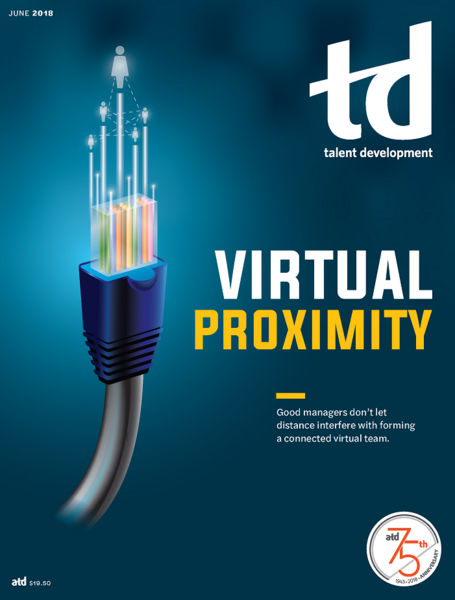TD Magazine Article
Together, Apart
Where priorities meet and diverge for talent development and executives in 2018.
Fri Jun 01 2018
People who work together often have different perspectives and, therefore, different priorities. Understanding where and how these converge and differ is important for collaboration, especially among L&D professionals and executives. Luckily, LinkedIn Learning's 2018 Workplace Learning Report sheds light on both groups' views.
According to the report, talent developers and executives have the same top priority for L&D in 2018: training soft skills. Why? "Both recognize that in the age of automation, the most important skills for people are human skills, soft skills," says Rachel Lefkowitz, a content marketing manager at LinkedIn and author of the report. "Robots can't lead organizations. They can't bake empathy into products or enable collaboration between groups of diverse backgrounds. Only people can do that."
However, the two groups have different ideas for second place. For talent developers, that is providing consistent global training. For executives, it's identifying trends to prevent future skills gaps.
Lefkowitz highlights how the groups' different roles contribute to this divergence. "Successful business leaders focus on next task and what they need to prepare for the next five to 10 years ... and the useful shelf life for a professional skill has shrunk," she explains, "which means organizations are thinking about continual upskilling." Turning to L&D professionals, Lefkowitz realizes that their job is "first and foremost to focus on addressing today's talent needs by creating great learning experiences." Yet, she adds, "with the data and insights now available, they can be more future-focused."
For now, talent development practitioners may focus on using this information on immediate challenges. Their third-highest priority was delivering insights on internal skills gaps.
"Talent development is being asked to play a more strategic role in the business and in workforce planning," says Lefkowitz. "This starts with understanding your current skills gaps and creating personalized learning to address them. Next, with a culture of learning and support of the executive team, talent leaders can focus on planning for the future."

